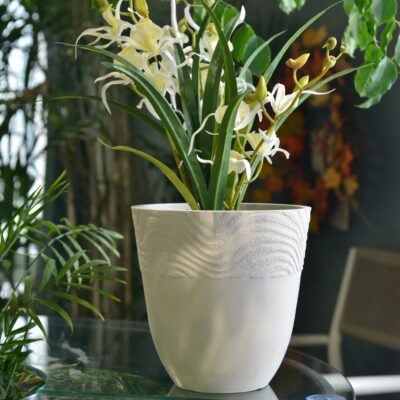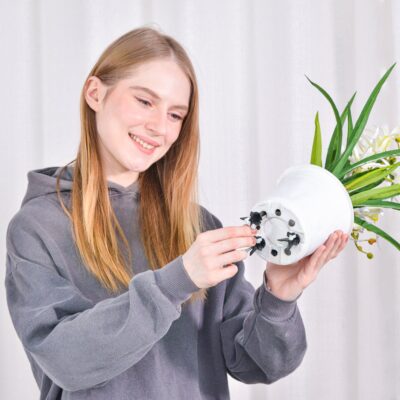How to Choose the Right Size and Shape of Decorative Planters for Your Living Room Based on Room Size, Lighting, and Furniture Layout?
Selecting decorative planters that perfectly complement your living room involves more than just choosing styles you love. The size and shape of your planters should also be carefully considered in relation to the room's dimensions, the amount of natural light it receives, and the arrangement of your furniture. For American homeowners aiming for a well-designed and harmonious living space, here’s a guide to making the right choices:
Considering Room Size
The overall dimensions of your living room should be the primary factor in determining the appropriate size of your decorative planters.
- Small Living Rooms: In smaller spaces, opt for smaller planters to avoid overwhelming the room. Consider tabletop planters, windowsill planters, or small floor planters that won't take up too much valuable square footage. A few strategically placed small planters can add life without making the room feel cluttered. Hanging planters are also a great option for maximizing space.1
- Medium-Sized Living Rooms: These rooms offer more flexibility. You can incorporate a mix of small, medium, and even a few larger planters depending on your layout. Medium-sized floor planters can stand alone as accents or complement furniture groupings.2
- Large Living Rooms: Larger rooms can handle bigger and more substantial planters.3 Don't be afraid to use large floor planters as focal points or to fill empty corners. You can also create groupings of various sizes to add depth and visual interest.

Evaluating Lighting Conditions
The amount of natural light your living room receives will influence the placement and sometimes the size of your planters.4
- Brightly Lit Rooms: Rooms with ample natural light can support larger plants in larger planters placed further away from windows if needed. You have more flexibility in terms of planter size and plant choice.
- Low-Light Rooms: In rooms with limited natural light, it’s best to keep plants closer to windows or opt for plants that tolerate low light in smaller or medium-sized planters. Avoid large, dense plants that might further darken the space.
- Utilizing Light Sources: Consider how light falls in the room. A taller planter next to a window can catch more light, while a shorter planter might be better suited for a tabletop that receives indirect light.
Integrating with Furniture Layout
The arrangement of your furniture plays a crucial role in determining the best size and shape of your planters.
- Tabletop Planters: Small, low-profile planters work well as centerpieces on coffee tables or as accents on side tables and consoles.5 Choose shapes that complement the shape of your furniture – for example, a round planter on a round table or a rectangular planter on a long console.
- Floor Planters: Consider the height of your furniture when choosing floor planters. Taller planters can balance out high-backed sofas or armchairs, while shorter, wider planters might work better next to lower furniture. Use them to fill corners, flank doorways, or add greenery to empty spaces.
- Planters as Dividers: In open-concept living rooms, larger planters can be used to subtly define different zones, such as separating a seating area from a dining space. Choose taller planters with dense foliage for this purpose.
- Hanging Planters: These are excellent for adding visual interest at different heights and can be placed near windows, in corners, or even above seating areas (ensuring they don't obstruct views or pathways).6
Choosing the Right Shape
The shape of your decorative planters can also enhance the overall design of your living room.
- Round Planters: These often have a softer, more organic feel and can complement round or curved furniture.7
- Square or Rectangular Planters: These shapes tend to have a more modern or structured look and can work well with clean-lined furniture and contemporary spaces.8
- Tall, Cylindrical Planters: These are great for adding height and drama and can fit well in corners or alongside tall furniture.
- Wide, Low Planters: These can be used as centerpieces or to create a display of multiple smaller plants.
Creating Visual Balance and Harmony
Ultimately, the goal is to create a balanced and harmonious look in your living room. Ensure that the size and shape of your planters feel proportionate to the room and work well with your existing furniture and lighting. By considering these factors thoughtfully, you can select decorative planters that enhance the beauty and tranquility of your living space.
Article copyright by GreenShip

Comments
Post a Comment